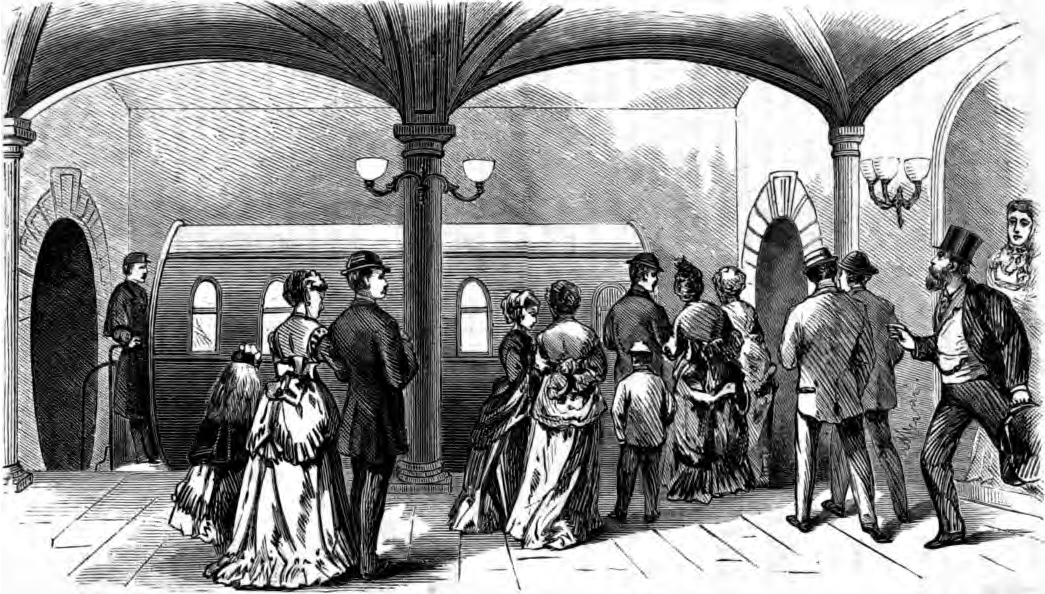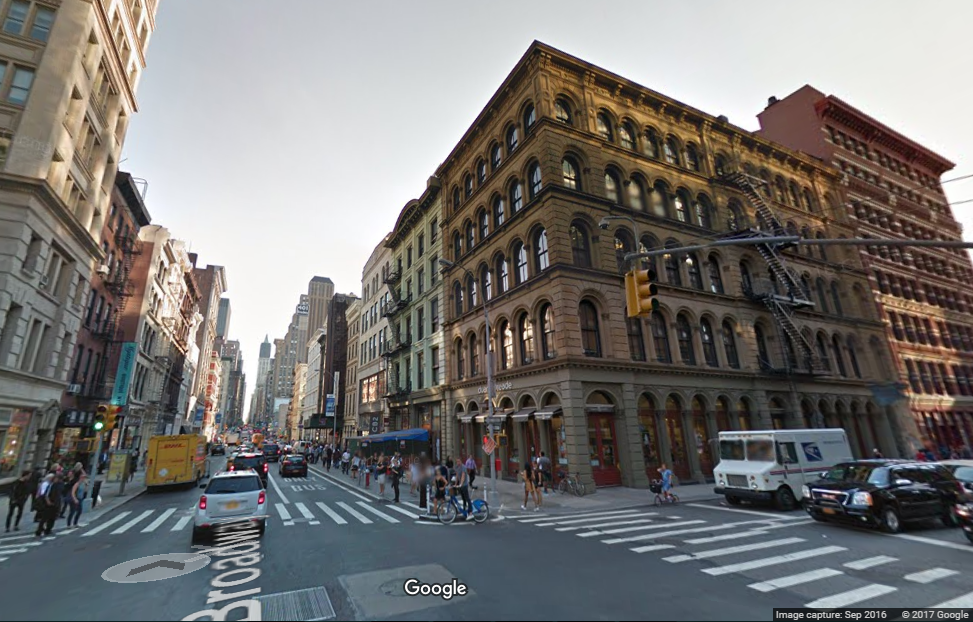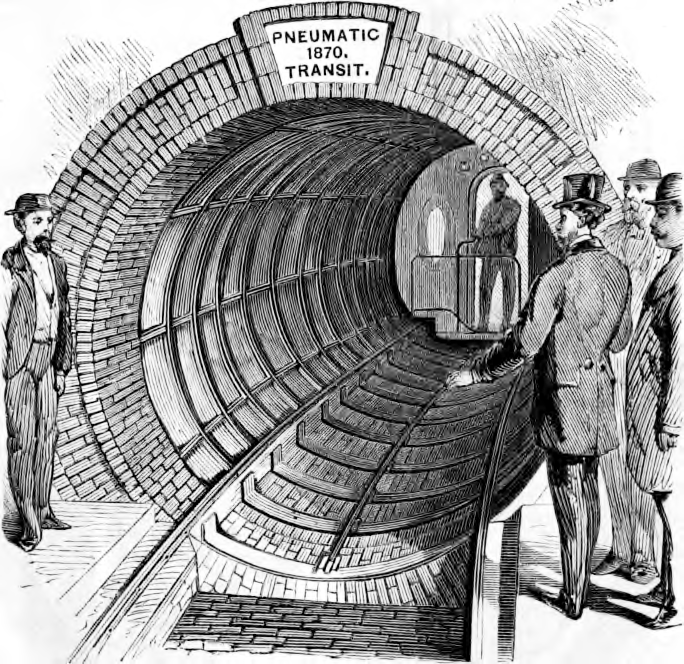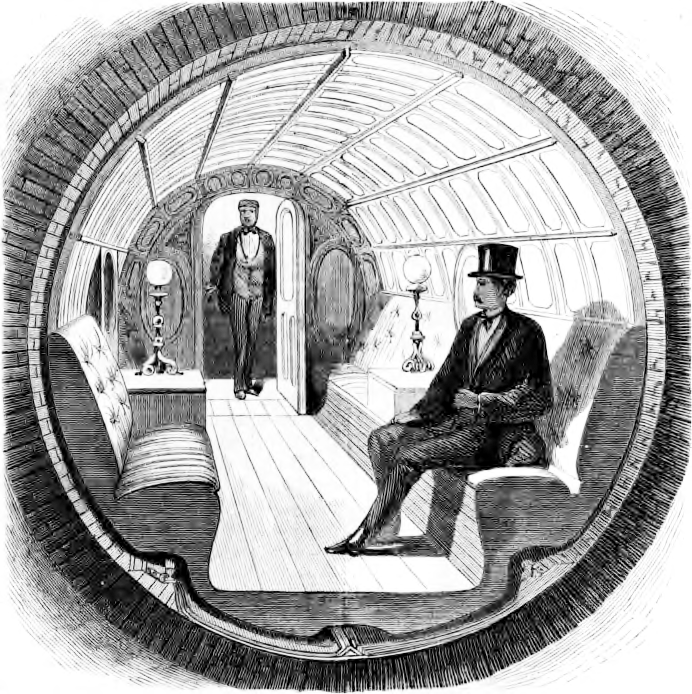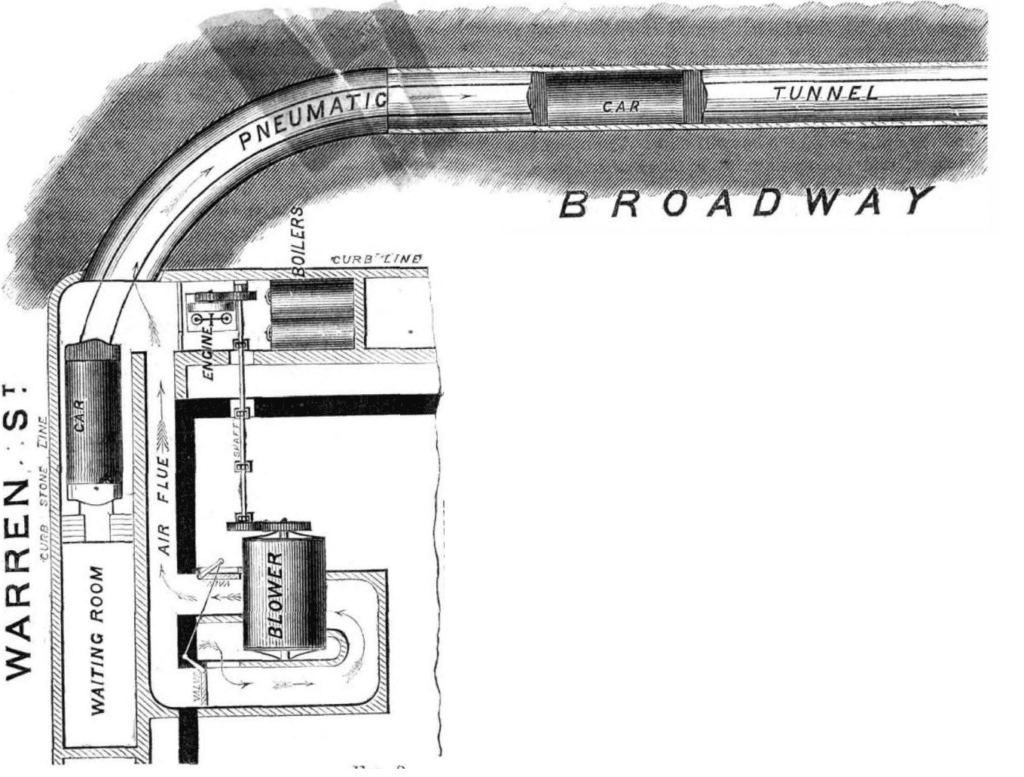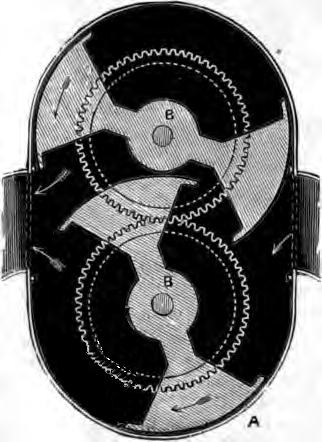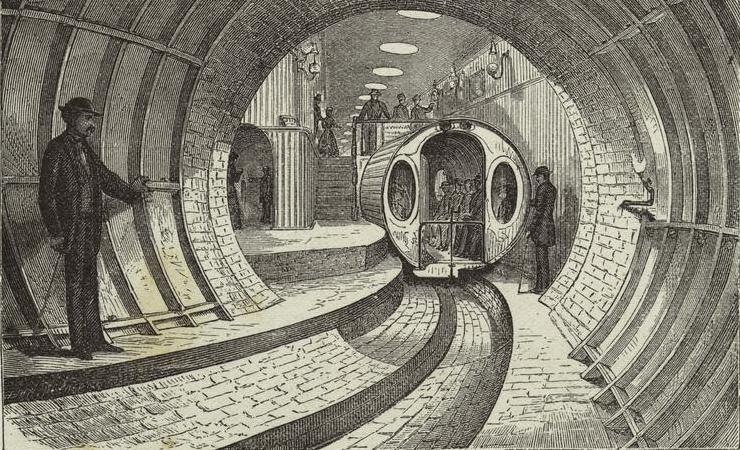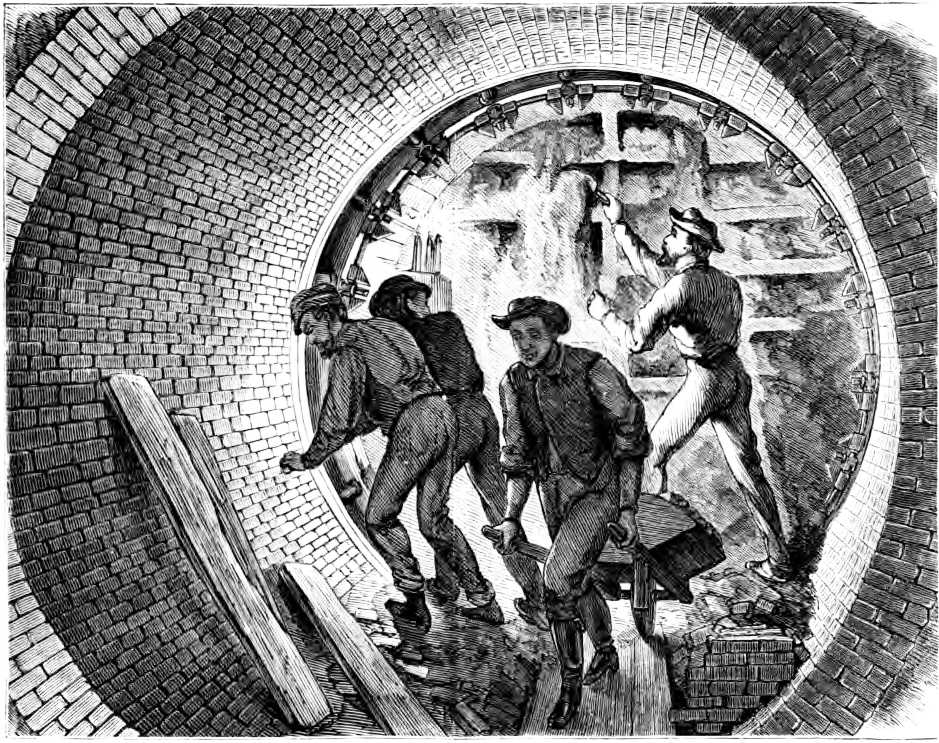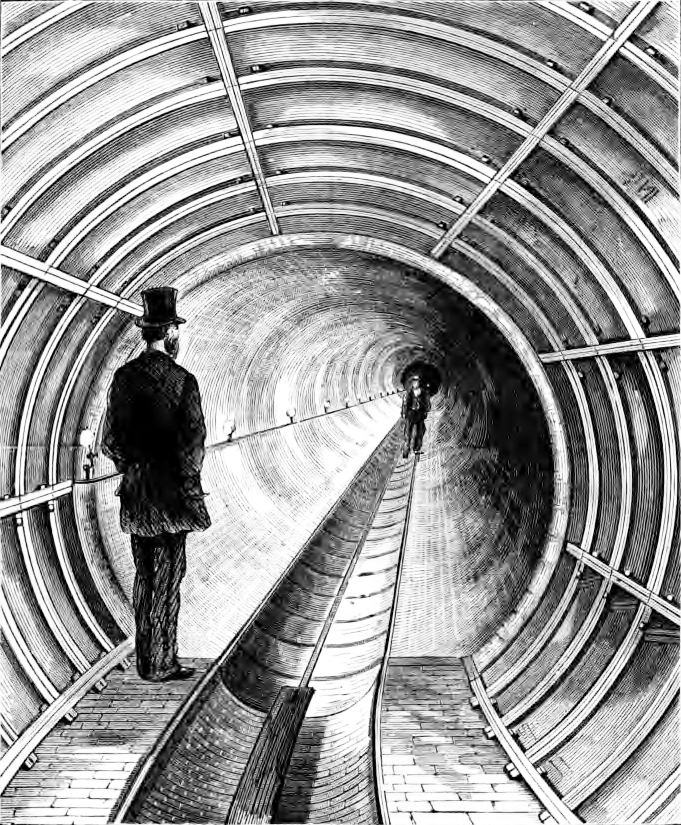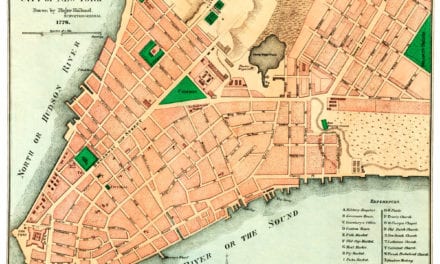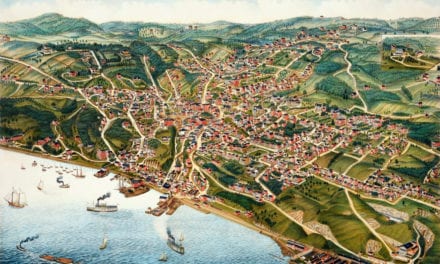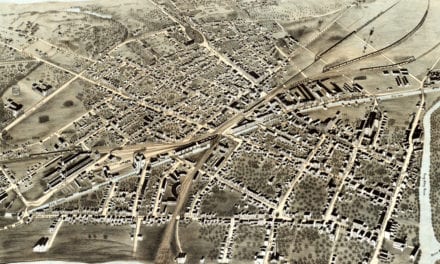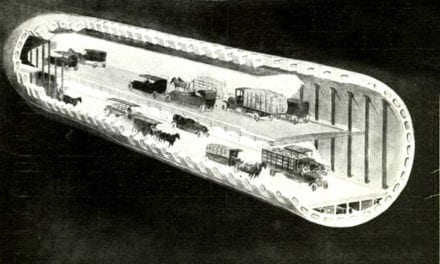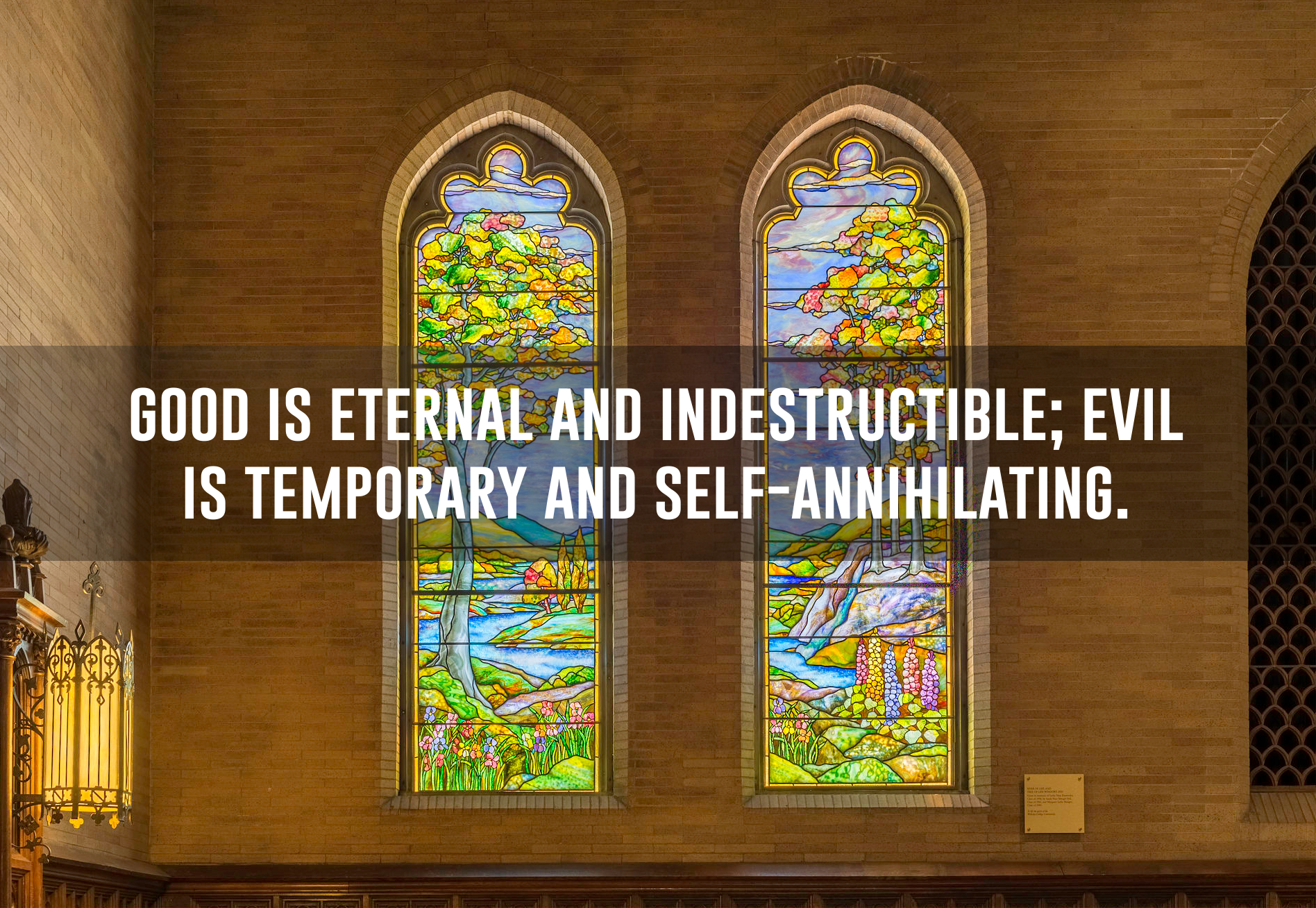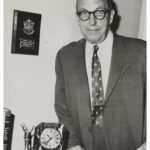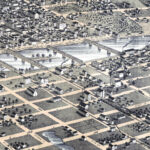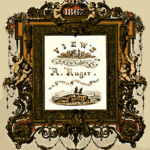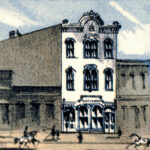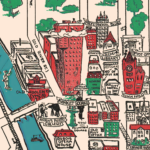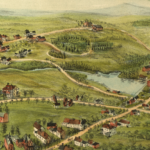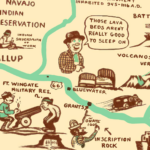New York City’s First Underground Railway
The New York City Subway opened on October 27, 1904, but the history of New York City’s subterannean rail system began 31 years prior, in 1870. That was the year a man by the name of Alfred Ely Beach began operating an air-powered subterranean railway below New York City.
Alfred Ely Beach opened the Pneumatic Tube to the public in 1870 in an attempt to garner public support to build the pneumatic subway across all of Manhattan. The plan called for building tracks from NYC’s Battery to the Harlem River, a goal the New York City Subway would achieve 31 years later.
The Devlin Building, 459 Broadway
The entrance to the pneumatic underground railway was located at the south-west corner of Broadway and Warren street in the basement of The Devlin Building, a clothing store housed in the splendid marble structure seen on the corner in the picture above.
A few steps below the sidewalk was the pneumatic train’s ticket-office. Visitors entered the subterannean station and were greeted by the sight of the top panel of beautifully decorated, 20 ton blowing-engine which was used to generate the air-blasts that propelled trains through the tube.
The Pneumatic Tunnel
After donating 25 cents to a local charity for admittance, guests entered The Pneumatic Underground Railway’s waiting room, which was elegantly furnished with mirrors, fountains, statues and even a gold fish pond for visitors to enjoy while they waited for their train.
When the train arrived, passengers walked toward the East end of the waiting room, descended a half-dozen steps, and stood on the platform waiting for the doors of New York City’s first underground railway to open.
The Pneumatic Passenger-Car
The image above shows the interior of New York’s first undergroud subway car. The car was circular, richly upholstered, and brilliantly illuminated by a zircon light. The car provided comfortable seating for twenty-two people.
How The Pneumatic Train Worked
The pneumatic subway was propelled by a pressurized air current. Trains were pushed forward through the tunnel by an air stream created in the tunnel by a gigantic blower. The air stream created by the blower would push against the “sail” of the train car, forcing the train down the track.
The tunnel walls were designed to be wider closer to the loading stations, a feature that allowed the current of air to flow around the train instead of continuing to propelling it forward as the train reached the station. The conductor would then apply mechanical brakes to initiate a final stop.
The blower was powered by a 100-horse power steam engine, able to push 100,000 cubic feet of air per minute at full power. It was twenty one and a half feet high, sixteen feet long, and thirteen feet wide, with two pairs of massive wings arranged so that the air was drawn in by one side of the machine, carried between the wings, and forced out of the other side.
When the blower was in motion, an enormous volume of air was driven through the tunnel, driving the car forward like a boat sailing on the wind.
When the car arrived at the Murray street station its wheel would strike a telegraph wire, sending a signal to the engineer to shift the position of the air valves and reverse the air-current, creating a partial vacuum in the tunnel, and sending the car in the opposite direction.
America’s First Underground Railroad
The original pneumatic tunnel was 312 feet, providing a test track between Broadway and Murray Street. It opened to the public on February 26, 1870. Beach claimed the subway would be able to attain speeds of 100mph if it were expanded, but the test tunnel only reached speeds of 10mph, as the track was approximately the length of an American football field.
When the station opened, New York City newspapers heralded it as one of the cities greatest achievements of the time period.
The New York Herald said:
“It was virtually the opening day of the first underground railway in America.”
The New York Times said:
“Certainly the most novel, if not the most successful, enterprise that New York has seen for many a day is the pneumatic tunnel under Broadway. A myth, or a humbug, it has hitherto been called by everybody who has been excluded from its interior; but hereafter the incredulous public can have the opportunity of examining the undertaking and judging of its merits.”
The Evening Mail said:
“The problem of tunneling Broadway has been solved. There is no mistake about it. Even as we write, a comfortable passenger car is running smoothly and safely between Warren and Murray streets, demonstrating, beyond contradiction, that it is only a question of time and money to give us rapid and comfortable transportation from the Battery to Harlem river.”
The Beach Pneumatic Subway only operated for three years, but the technique used to create the tunnel was adapted for use in digging the Hudson River Tunnel and the City and South London Railway, under the Thames River. The picture above shows workers building the tunnel using Beach’s pneumatic shield, which was the prototype of the Greathead Tunneling Shield used for most modern tunnels built since.
The Fate of The Pneumatic Subway
A series of problems put an end to Alfred Ely Beach’s vision. He was met with zoning obstacles and financial pressures that kept him from being able to expand the train line. Beach eventually received permission from the government to build the City’s first subway system in 1873, but a stock market crash caused investors to withdraw support.
The pneumatic subway closed in 1873 ,and New Yorkers had to wait 31 years before the electric powered New York City Subway System opened in 1904.
In 1912, during the construction of the Lexington Avenue Subway’s City Hall Station, contractors uncovered the remains of the Pneumatic Tunnel. The tunnel had remained undisturbed under Broadway, between Park Place and Murray Street, for forty years. It was destroyed to expand the subway.
The Legacy of The Pneumatic Subway
In 2013, Elon Musk proposed a Hyperloop system that would propel trains through tubes at high speeds using pressurized air. The difference between Beach’s subway and Musk’s hyperloop is that the hyperloop trains will float on magents to reduce resistance by creating less friction, but the concept is otherwise similar to Beach’s Pneumatic Subway.
Elon Musk began building a hyperloop tunnel under Los Angeles in 2017.
Read More
Illustrated Description of the Broadway Pneumatic Underground Railway
The Beach Pneumatic Transit Company’s Broadway Underground Railway
Scientific American, “The Pneumatic Tunnel Under Broadway, N.Y.” 1870

